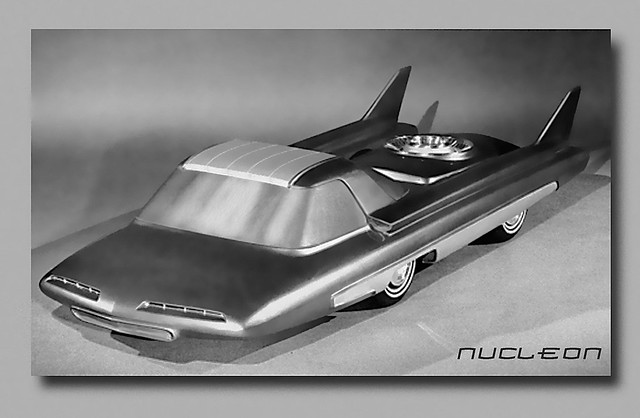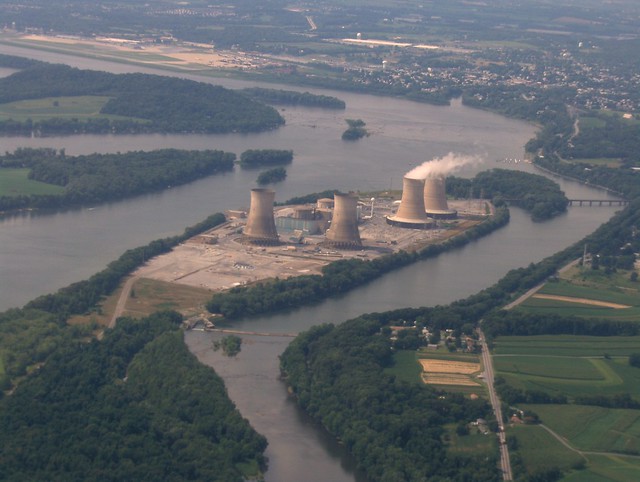The Associated Press just published the results of a year-long investigation into the dealings between the nuclear power industry and the U.S. Nuclear Regulatory Commission. The results are, well, pretty damning.When commercial nuclear power was getting its start in the 1960s and 1970s, industry and regulators stated unequivocally that reactors were designed only to operate for 40 years. Now they tell another story–insisting that the units were built with no inherent life span, and can run for up to a century, an Associated Press investigation shows. … By rewriting history, plant owners are making it easier to extend the lives of dozens of reactors in a relicensing process that resembles nothing more than an elaborate rubber stamp.With many U.S. plants turning 40 in the past few years, there's been a flood of applications for relicensing. When approved, the plants are given the OK for another 20 years of operation. According to the AP, 66 of 104 reactors in the U.S. have been given approval so far, and the process has been largely a formality. Relicensing does not require "fully independent" safety reviews, and instead is mostly based on industry-submitted paperwork with a serious lack of on-site verification from the NRC. The AP also notes that "paperwork of the [NRC] sometimes matches word-for-word the language used in a plant operator's application," and "tighter standards are not required to compensate for decades of wear and tear." Nuclear power was the embodiment of the United States' obsession with the future that sparked innovation and tech development from the fifties into the seventies. While the commission of the first Nimitz-class nuclear-powered aircraft carrier in 1975 was a high water mark for use of nuclear tech, obsession with a Jetsons-esque future was peaking even earlier, evidenced by Ford's damn cool nuclear lead sled Nucleon concept. Nuclear power at the time was all but guaranteed to help us roar through the space age, providing a constant stream of clean power that was filthy cheap.
Nuclear power was the embodiment of the United States' obsession with the future that sparked innovation and tech development from the fifties into the seventies. While the commission of the first Nimitz-class nuclear-powered aircraft carrier in 1975 was a high water mark for use of nuclear tech, obsession with a Jetsons-esque future was peaking even earlier, evidenced by Ford's damn cool nuclear lead sled Nucleon concept. Nuclear power at the time was all but guaranteed to help us roar through the space age, providing a constant stream of clean power that was filthy cheap. The eighties kicked off with the Three Mile Island accident in '79 and the far-worse Chernobyl disaster in '86. Lax safety standards and poor preparation led to both, which combined to kill off America's nuclear love affair. Orders for plants were canceled left and right, leaving older plants in service for longer and longer.Environmental scientist Amory Lovins summed it up thusly in a 2009 report :Of all 132 U.S. nuclear plants built (52% of the 253 originally ordered), 21% were permanently and prematurely closed due to reliability or cost problems, while another 27% have completely failed for a year or more at least once. The surviving U.S. nuclear plants produce ~90% of their full-time full-load potential, but even they are not fully dependable. Even reliably operating nuclear plants must shut down, on average, for 39 days every 17 months for refueling and maintenance, and unexpected failures do occur too.
The eighties kicked off with the Three Mile Island accident in '79 and the far-worse Chernobyl disaster in '86. Lax safety standards and poor preparation led to both, which combined to kill off America's nuclear love affair. Orders for plants were canceled left and right, leaving older plants in service for longer and longer.Environmental scientist Amory Lovins summed it up thusly in a 2009 report :Of all 132 U.S. nuclear plants built (52% of the 253 originally ordered), 21% were permanently and prematurely closed due to reliability or cost problems, while another 27% have completely failed for a year or more at least once. The surviving U.S. nuclear plants produce ~90% of their full-time full-load potential, but even they are not fully dependable. Even reliably operating nuclear plants must shut down, on average, for 39 days every 17 months for refueling and maintenance, and unexpected failures do occur too. Yet, as successful nuclear programs in France and Germany show, failures in the industry aren't a simple matter of technology. It's a failure of procedure, as at Three Mile Island, Chernobyl, and, more recently, Fukushima Daiichi. In 1985 Forbes published a story assaulting the industry. James Cook wrote as much: "It wasn't technology that doomed nuclear power in the U.S. As experience everywhere demonstrates, the technology is as sound and productive as its promoters always have claimed it would be."Instead, the real problem was with management:The failure of the U.S. nuclear power program ranks as the largest managerial disaster in business history, a disaster on a monumental scale … only the blind, or the biased, can now think that the money has been well spent. It is a defeat for the U.S. consumer and for the competitiveness of U.S. industry, for the utilities that undertook the program and for the private enterprise system that made it possible.Which brings us back to the AP's story on the state of affairs today. Our reactors are old, and many cases, already living on borrowed time according to the original stated life expectancies. With very little public support for the building of newer, more advanced plants, the industry is stuck keeping ancient plants online. Of course, considering that 40 year projection included economic plans to pay off building debts by then, that's more lucrative than building new plants anyway.The argument from the industry for rubber-stamp approval of continued operations is that the original stated lifespan of the plants was for economic and legal reasons, and that theoretically they could run indefinitely. But an AP review of historical records, along with interviews with engineers who helped develop nuclear power, shows just the opposite: Reactors were made to last only 40 years. Period. The record also shows that a design limitation on operating life was an accepted truism.The real question is how the U.S. will move forward. The Energy Department just announced $4.5 billion in loans to California solar development, a huge boon to the current push for sustainable energy production in America. Meanwhile, French President Nicolas Sarkozy just pledged $1.43 billion to continue to develop French nuclear power, of which he said there is "no alternative". Yet in the U.S., discussions of our own nuclear program are near-nonexistent, with politicians more than willing to stay away from the volatile topic and the public more or less content with pretending it's not something we need to deal with. However, with regulators tacitly agreeing with industry that everything is hunky-dory, it's a conversation we need to have.Photos via 1 2 3 4
Yet, as successful nuclear programs in France and Germany show, failures in the industry aren't a simple matter of technology. It's a failure of procedure, as at Three Mile Island, Chernobyl, and, more recently, Fukushima Daiichi. In 1985 Forbes published a story assaulting the industry. James Cook wrote as much: "It wasn't technology that doomed nuclear power in the U.S. As experience everywhere demonstrates, the technology is as sound and productive as its promoters always have claimed it would be."Instead, the real problem was with management:The failure of the U.S. nuclear power program ranks as the largest managerial disaster in business history, a disaster on a monumental scale … only the blind, or the biased, can now think that the money has been well spent. It is a defeat for the U.S. consumer and for the competitiveness of U.S. industry, for the utilities that undertook the program and for the private enterprise system that made it possible.Which brings us back to the AP's story on the state of affairs today. Our reactors are old, and many cases, already living on borrowed time according to the original stated life expectancies. With very little public support for the building of newer, more advanced plants, the industry is stuck keeping ancient plants online. Of course, considering that 40 year projection included economic plans to pay off building debts by then, that's more lucrative than building new plants anyway.The argument from the industry for rubber-stamp approval of continued operations is that the original stated lifespan of the plants was for economic and legal reasons, and that theoretically they could run indefinitely. But an AP review of historical records, along with interviews with engineers who helped develop nuclear power, shows just the opposite: Reactors were made to last only 40 years. Period. The record also shows that a design limitation on operating life was an accepted truism.The real question is how the U.S. will move forward. The Energy Department just announced $4.5 billion in loans to California solar development, a huge boon to the current push for sustainable energy production in America. Meanwhile, French President Nicolas Sarkozy just pledged $1.43 billion to continue to develop French nuclear power, of which he said there is "no alternative". Yet in the U.S., discussions of our own nuclear program are near-nonexistent, with politicians more than willing to stay away from the volatile topic and the public more or less content with pretending it's not something we need to deal with. However, with regulators tacitly agreeing with industry that everything is hunky-dory, it's a conversation we need to have.Photos via 1 2 3 4
Advertisement


Advertisement
